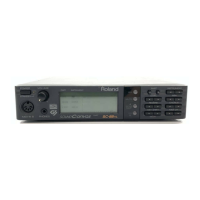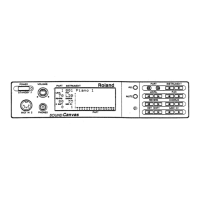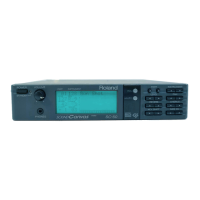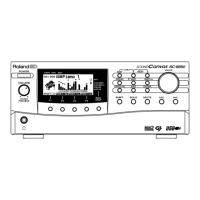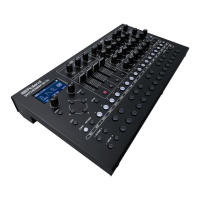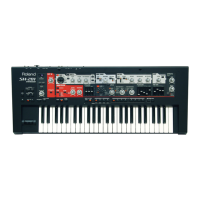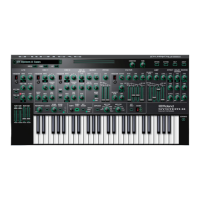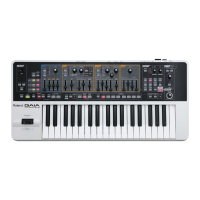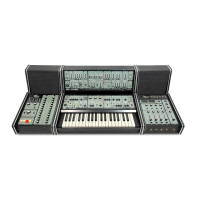■ Device ID number settings
The Device ID number is an identification number used when transmitting and receiv-
ing exclusive messages (p.133). This unit receives exclusive messages only if its own
device ID number matches the device ID number of the message. This means that if you
wish to transmit exclusive messages between devices, you must make sure that their
device ID numbers match.
The device ID number is a number from 1 — 32. With the factory settings the number
is 17.
* If you wish to playback Roland SMF music data, be sure that the device ID number is set to 17.
If it is not, playback will not be correct.
* It is not possible to specify the device ID number separately for individual Parts.
How to make settings
1. Press [ALL] to make the button indicator light.
2. Simultaneously press both the PART[ll
ll
][rr
rr
] buttons.
3. Use [uu
uu
][dd
dd
] to select “Device ID”.
4. Use INSTRUMENT[ll
ll
][rr
rr
] to modify the device ID number.
5. When you finish making settings, simultaneously press both PART[ll
ll
][rr
rr
]
buttons to end the procedure.
About MIDI implementation charts
MIDI allows many different types of device to be connected, but in some cases
there will be types of message which cannot be conveyed meaningfully. For example if
you wish to use keyboard aftertouch to control the sound but the sound generator con-
nected to the keyboard does not receive aftertouch messages, you will not get the
musical result you intend. In this way, only messages that are used by both devices will
actually be conveyed.
The MIDI specification requires that the owner's manual for each MIDI device
include a “MIDI Implementation Chart” (p.209) that shows the types of MIDI message
which are actually transmitted and received by a device. Place the transmit column of
the transmitting device's implementation chart side by side with the receive column of
the receiving device's implementation chart. Messages which are marked as “O” in
both charts can be conveyed successfully. If either chart shows a “X” for a certain type
of message, that message cannot be conveyed.
For your reference, the data format for exclusive messages and other details of this
unit MIDI implementation are given on p.188 and following.
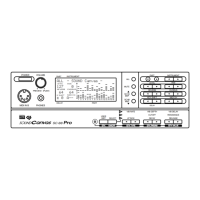
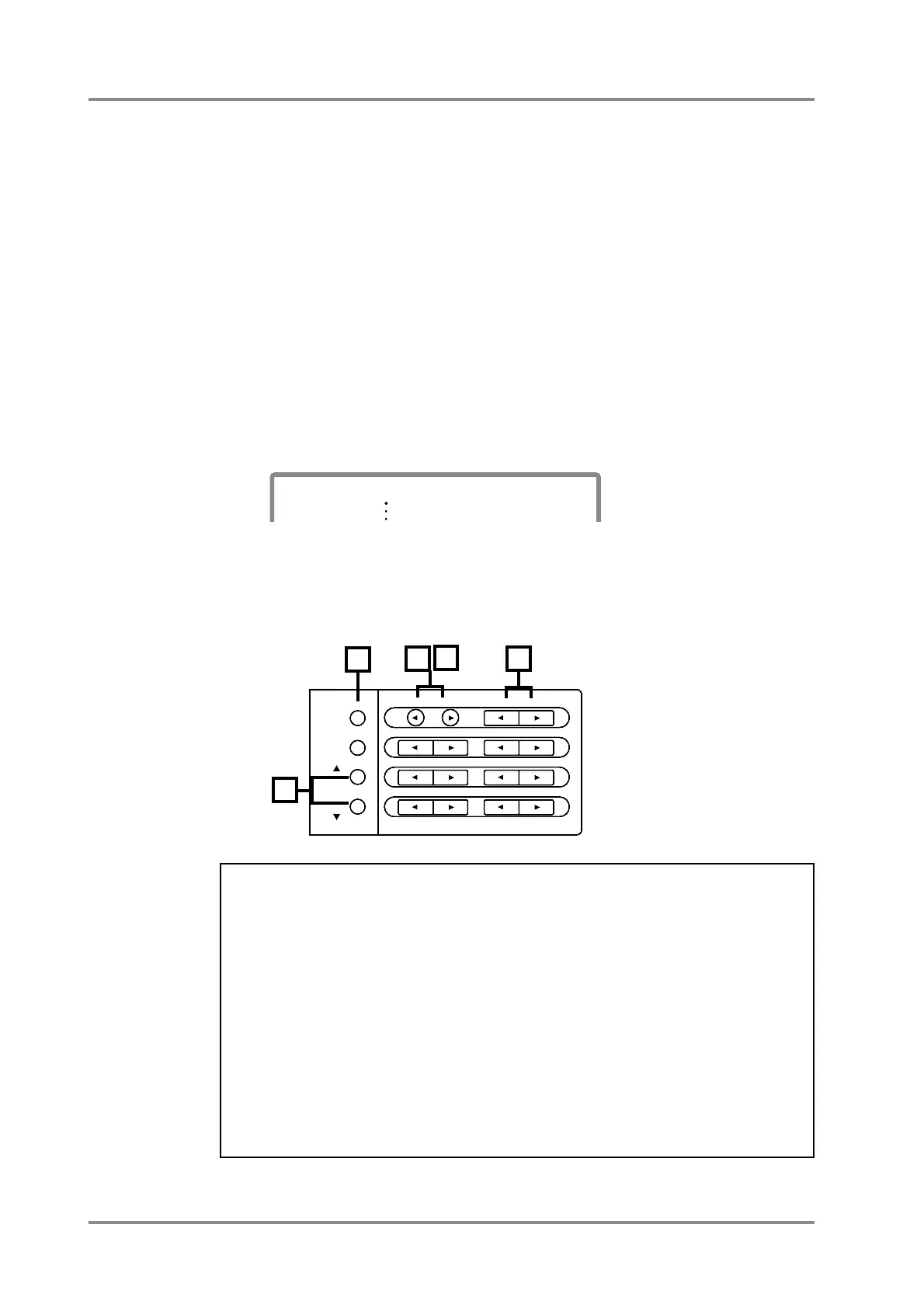